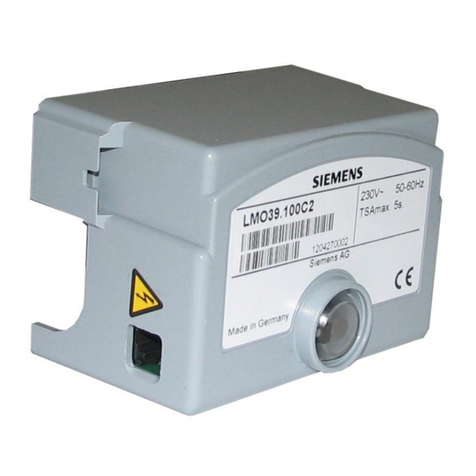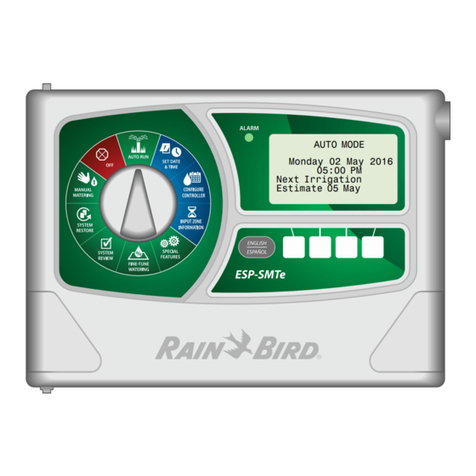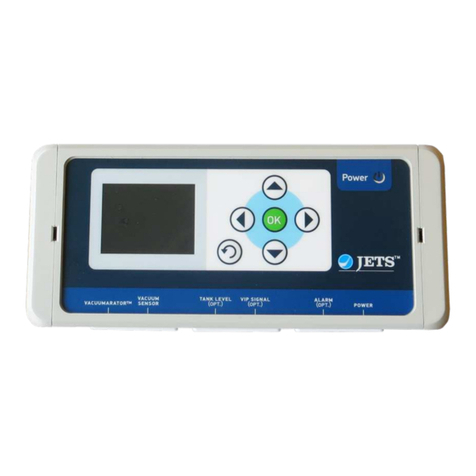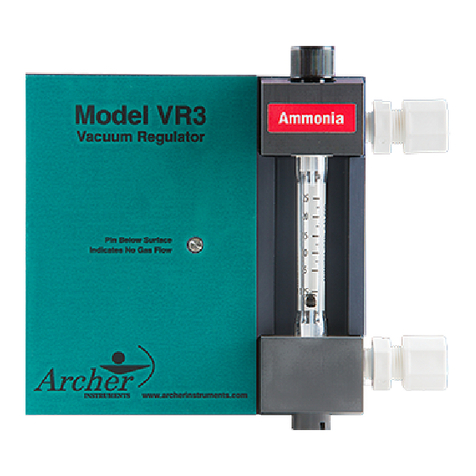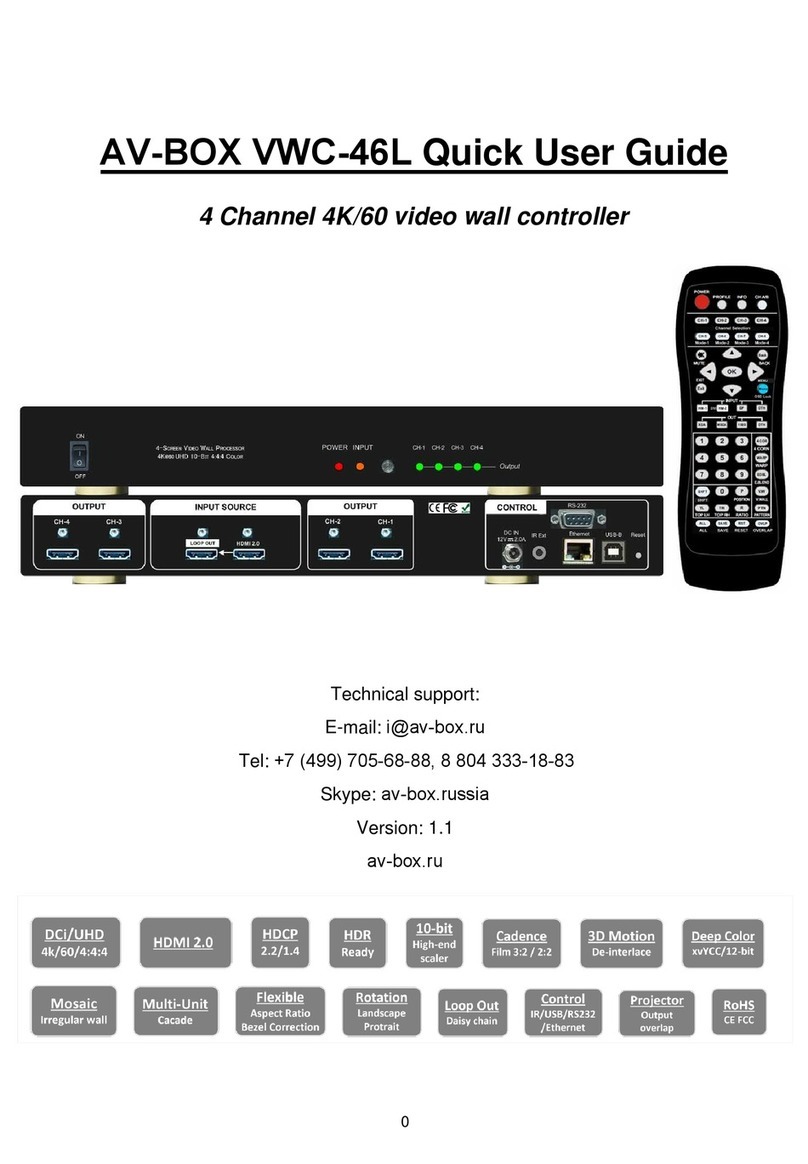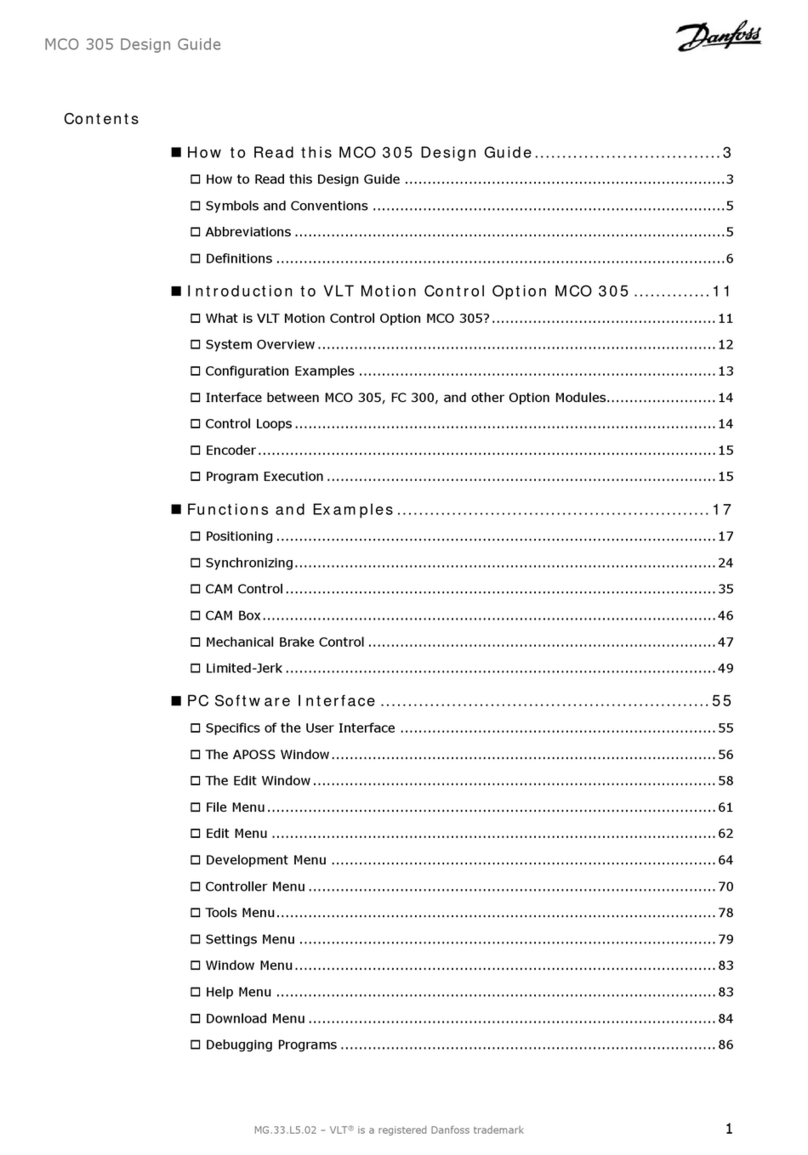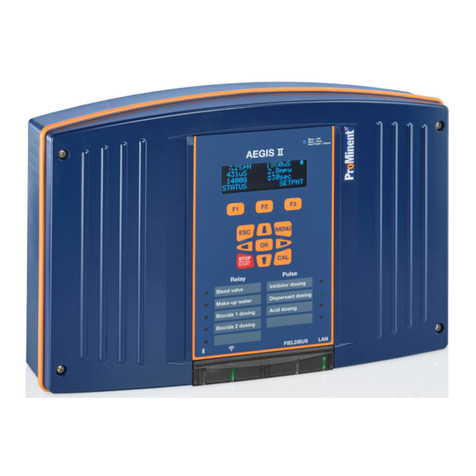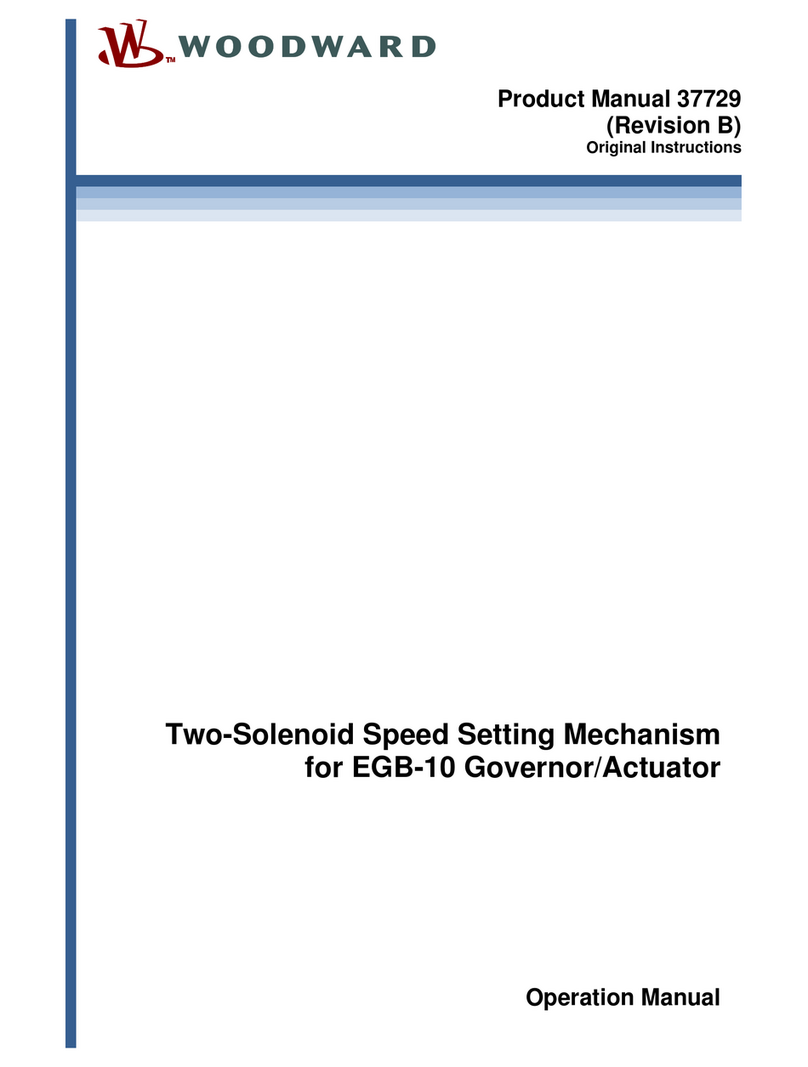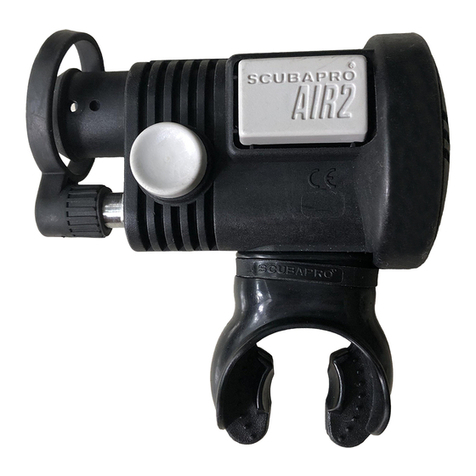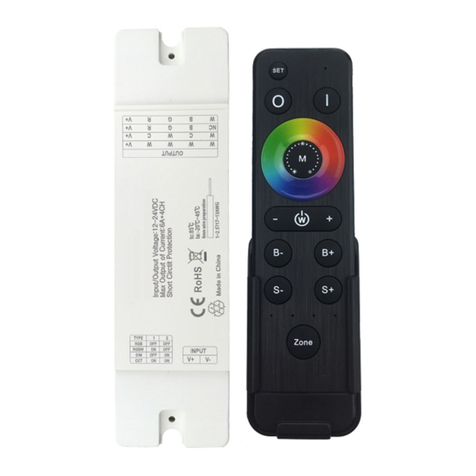Meinberg TCR511PCI User manual

MANUAL
TCR511PCI
IRIG Code controlled Radio Clock
2009-06-24
Meinberg Radio Clocks GmbH & Co. KG


Page 0
Table of Contents
1 Impressum 1
2 Content of the USB stick 2
3 Introduction: Abstract of Time Code 3
3.1 DescriptionofIRIG-Codes....................................... 3
3.2 IRIGStandardFormat......................................... 4
3.3 AFNORStandardFormat....................................... 5
4 Features TCR511PCI 6
4.1 Functionaldescription......................................... 6
4.2 Pulseoutputs ............................................. 7
4.3 Asynchronousserialport ....................................... 7
4.4 Connectors and LEDs in the bracket . . . . . . . . . . . . . . . . . . . . . . . . . . . . . . . . . 8
4.5 Pin assignments of the D-Sub-connector . . . . . . . . . . . . . . . . . . . . . . . . . . . . . . . 8
5 Putting into operation 10
5.1 Installing the TCR511PCI in your Computer . . . . . . . . . . . . . . . . . . . . . . . . . . . . . 10
5.2 Powersupply.............................................. 10
5.3 Inputsignals.............................................. 10
5.4 Inputimpedance............................................ 10
5.5 Photocouplerinput .......................................... 11
5.6 CongurationofTCR511PCI..................................... 11
6 Firmware updates 12
7 Skilled/Service-Personnel only: Replacing the Lithium Battery 13
8 Technical specification TCR511PCI 14
8.1 CE-Label................................................ 15
8.2 Format of the Meinberg Standard Time String . . . . . . . . . . . . . . . . . . . . . . . . . . . . 16
0
Date: 2009-06-24 TCR511PCI

Page 1
1 Impressum
Meinberg Radio Clocks GmbH & Co. KG
Lange Wand 9, 31812 Bad Pyrmont - Germany
Phone: + 49 (0) 52 81 / 93 09 - 0
Fax: + 49 (0) 52 81 / 93 09 - 30
Internet: http://www.meinberg.de
Mail: info@meinberg.de
Date: 2009-06-24
TCR511PCI Date: 2009-06-24
1

Page 2 2 Content of the USB stick
2 Content of the USB stick
The included USB stick contains a driver program that keeps the computers system time synchronous to the
received IRIG-time. If the delivered stick doesn't include a driver program for the operating system used, it can
be downloaded from:
http://www.meinberg.de/german/sw/
On the USB stick there is a le called "readme.txt", which helps installing the driver correctly.
2
Date: 2009-06-24 TCR511PCI

Page 3
3 Introduction: Abstract of Time Code
The transmission of coded timing signals began to take on widespread importance in the early 1950s. Especially
the US missile and space programs were the forces behind the development of these time codes, which were used
for the correlation of data. The denition of time code formats was completely arbitrary and left to the individual
ideas of each design engineer. Hundreds of dierent time codes were formed, some of which were standardized
by the "Inter Range Instrumentation Group" (IRIG) in the early 60s.
Except these "IRIG Time Codes" other formats, like NASA36, XR3 or 2137, are still in use. The board &PROD-
UCT however only decodes IRIG-A, IRIG-B or AFNOR NFS 87-500 formats. The AFNOR code is a variant of
the IRIG-B format. Within this code the complete date is transmitted instead of the "Control Functions" of the
IRIG telegram.
3.1 Description of IRIG-Codes
The specication of individual IRIG time code formats is dened in IRIG Standard 200-04. They are described by
an alphabetical character followed by a three-digit number sequence. The following identication is taken from
the IRIG Standard 200-98 (only the codes relevant to TCR5xx are listed):
character bit rate designation A 1000 pps
B 100 pps
1st digit form designation 0 DC Level Shift width coded
1 sine wave carrier amplitude modulated
2nd digit carrier resolution 0 no carrier (DC Level Shift)
1 100 Hz, 10 msec resolution
2 1 kHz, 1 msec resolution
3 10 kHz, 100
µ
sec resolution
3rd digit coded expressions 0 BCD, CF, SBS
1 BCD, CF
2 BCD
3 BCD, SBS
BCD: time of year, BCD-coded
CF: Control-Functions (user dened)
SBS: seconds of day since midnight (binary)
TCR511PCI Date: 2009-06-24
3

Page 4 3 Introduction: Abstract of Time Code
3.2 IRIG Standard Format
4
Date: 2009-06-24 TCR511PCI

3.3 AFNOR Standard Format Page 5
3.3 AFNOR Standard Format
TCR511PCI Date: 2009-06-24
5

Page 6 4 Features TCR511PCI
4 Features TCR511PCI
The board TCR511PCI was developed for computer systems with PCI-bus. It is designed as an universal board
and can be used in systems with either 3.3 V or 5 V PCI slots therefore. The module supports clock speeds of 33
MHz and 66 MHz. TCR511PCI serves to receive and decode modulated (AM) and unmodulated (DC Level Shift)
IRIG and AFNOR time codes. AM-codes are transmitted by modulating the amplitude of a sine wave carrier,
unmodulated codes by variation of the width of pulses.
Automatic gain control within the receive circuit for modulated codes allows decoding of IRIG signals with a
carrier amplitude of 600 mVpp to 8 Vpp. The input stage is elecctically insulated and has an impedance of 50
Ω
,
it is accessible via the BNC connector in the bracket of TCR511PCI.
Unmodulated time codes must be connected to the D-Sub-plug of the module. An onboard photocoupler insulates
the internal receive circuit. In delivery state of TCR511PCI the contacts of the D-Sub-plug are not connected to
the photocoupler. Two DIP-switches must be set to the `ON' position for making this connection.
The board TCR511PCI provides a congurable serial interface (RS-232), a pulse per second (PPS) with TTL
or RS-232 level and a pulse per minute (PPM) with TTL level. Like the photocoupler, these signals are only
connected to the D-Sub-plug after setting DIP-switches into the `ON' position.
Software running on the computer can read out information regarding date, time and status of the IRIG re-
ceiver. Access to the board is made via writing to/reading from I/O ports. It is possible but not necessary to let
the board generate periodic hardware interrupts on the computer bus. Driver software supplied with the board
is keeping the computer's system time synchronous to the board time. If the USB Flash Memory, delivered with
TCR511PCI, doesn't include a driver for the used operating system, it can be downloaded free of charge at:
http://www.meinberg.de/english/sw/
Manuals for the drivers are available at this site also. The microprocessor system of TCR511PCI is equiped
with a Bootstrap-Loader and a Flash-EPROM. These features enable updating of the onboard software via the
serial RS-232 interface COM0 by using a Flash Program.
4.1 Functional description
After the received IRIG code has passed a consistency check, the software clock and the battery backed realtime
clock of TCR511PCI are synchronized to the external time reference. If an error in the IRIG telegram is detected,
the system clock of the board switches to holdover mode. Drifting of the internal time base and the generated
pulses (PPS/PPM) is limited to 1
µ
sec/sec by regulating the onboard quartz of TCR511PCI. IRIG code includes
day of year information only. The complete date is kept in the battery backed realtime clock and the software
clock therefore. The received day of year is compared to this complete date once per minute. If the board
detects a dierence between received and stored date information, TCR511PCI switches to holdover mode but
still synchronizes the internal time base to the received IRIG code.
Date and time kept in the realtime clock can be set by sending a Meinberg Standard Time Telegram to the
serial interface COM0 or via the PCI-Express bus.
6
Date: 2009-06-24 TCR511PCI

4.2 Pulse outputs Page 7
The internal system clock is always set to the received
IRIG time, which might have a local oset to UTC. Only
if TCR511PEX is congured with this oset, Meinberg
driver software is able to set the system time of the
computer correctly. The serial interface COM0 can
send the Standard Meinberg Timestring with UTC or
local (IRIG) time.
IRIG telegrams don't include announcers for the change
of time zone (daylight saving on/o) or for the insertion
of a leap second. Hence the clock will switch into free-
wheeling mode in case of such event, and resynchronize
afterwards.
The board TCR511PCI decodes the following formats:
A133: 1000pps, amplitude modulated sine wave signal, 10 kHz carrier frequency
BCD time of year, SBS time of day
A132: 1000pps, amplitude modulated sine wave signal, 10 kHz carrier frequency
BCD time of year
A003: 1000pps, DC Level Shift pulse width coded, no carrier
BCD time of year, SBS time of day
A002: 1000pps, DC Level Shift pulse width coded, no carrier
BCD time of year
B123: 100pps, amplitude modulated sine wave signal, 1 kHz carrier frequency
BCD time of year, SBS time of day
B122: 100pps, amplitude modulated sine wave signal, 1 kHz carrier frequency
BCD time of year
B003: 100pps,DC Level Shift pulse width coded, no carrier
BCD time of year, SBS time of day
B002: 100pps, DC Level Shift pulse width coded, no carrier
BCD time of year
AFNOR NFS 87-500: 100pps, amplitude modulated sine wave signal, 1 kHz carrier frequency
BCD time of year, complete date, SBS time of day
4.2 Pulse outputs
The module TCR511PCI generates pulses at change of second (PPS) and change of minute (PPM). The PPS
signal is available with TTL (0/+5V) or RS-232 (-3..12V/ +3..12V) level, the PPM signal with TTL level only.
If required, DIP-switches can be set up to direct the pulses to a corresponding pin of the D-Sub-connector in the
bracket.
4.3 Asynchronous serial port
TCR511PCI provides an asynchronous serial interface (RS-232) called COM0. The serial port sends a Standard
Meinberg Time string either once per second, once per minute or on request with ASCII `?' only. The format of
this telegram is described in the `Technical Specications'. The transmission speed and the framing can be set
via the PCI-Express bus by using the shipped monitor software. Furthermore, the serial interface COM0 is used
for a potential rmware update.
TCR511PCI Date: 2009-06-24
7

Page 8 4 Features TCR511PCI
4.4 Connectors and LEDs in the bracket
The bracket of the board includes the BNCconnector
for the amplitude modulated time codes, three LEDs,
a key for activating the Bootstrap- Loader and a 9 pin
D-Sub-plug.
The LEDs signal the status of the IRIG receiver. The
upper, red LED is switched on whenever the internal
timing of TCR511PCI is in holdover mode. This state
arises after power up and if an error in the IRIG telegram
is detected. This LED changes state only at change of
minute.The central, green LED is switched on if the
IRIG receiver detects a correct telegram at its input.
If the below, green LED (Lock) is switched on, the
internal timing of TCR511PEX is synchronized to the
received IRIG code by a PLL (Phase Locked Loop).
Pressing the hidden key BSL is required for activat-
ing the Bootstrap-Loader before updating the rmware.
The 9 pin D-Sub-connector is wired to the board's serial port. Pin assignment can be seen from the gure above.
This port can not be used as serial port for the computer. Instead, the clock uses the port to send out Meinberg's
standard time string in order to control an external display or some other external device. The string is sent
out once per second, once per minute or if requested by an incoming ASCII `?'. It is also possible to change
the board's board time by sending such a string towards the clock. Transmission speed, framing and mode of
operation can be modied using the monitor software. The string format is described in the section `Technical
Specications' at the end of this manual.
4.5 Pin assignments of the D-Sub-connector
Only the signals of the serial interface are connected to the D-Sub-plug directly. If another signal shall be con-
nected to a pin of the plug, a DIP-switch must be set to the `ON' position.
Whenever an additional signal is connected to the rear
panel, special care must be taken to the conguration
of the cable used with the connector. If pins with TTL
level and RS-232 levels are connected to each other,
the circuits on the board may be damaged.
Only one of the switches 5 or 4 may be put in the `ON' position to connect the pulse per second with TTL level
or with RS-232 level to pin 8 of the plug. The table below shows the pin assignments for the connector and the
DIP-switch assigned to each of the signals:
8
Date: 2009-06-24 TCR511PCI

4.5 Pin assignments of the D-Sub-connector Page 9
Pin Signal SWITCH
1 +5V 3
2 RxD in (RS-232) -
3 TxD out (RS-232) -
4 PPM out (TTL) 6
5 GND -
6 + PWM in 1
7 - PWM in 2
8 PPS out (TTL/RS232) 5/4
9 (reserverd) 8
Those signals which do not have DIP-switch assigned are always available at the connector. All DIP-switches not
assigned are reserved and should remain in the `OFF' position.
TCR511PCI Date: 2009-06-24
9

Page 10 5 Putting into operation
5 Putting into operation
To achieve correct operation of the board, the following points must be observed.
5.1 Installing the TCR511PCI in your Computer
Every PCI-Express board is a plug & play board. After power-up, the computer's BIOS assigns resources like I/O
ports and interrupt lines to the board, the user does not need to take care of the assignments. The programs
shipped with the board retrieve the settings from the BIOS. The computer has to be turned o and its case must
be opened. The board can be installed in any PCI-Express slot not used yet. The rear plane must be removed
before the board can be plugged in carefully. The computers case should be closed again before restarting the
computer.
5.2 Power supply
All power supplies needed by TCR511PEX are delivered by the PCI-(Express) bus.
5.3 Input signals
Amplitude modulated IRIG-A/B or AFNOR codes must be connected to the BNC-jack in the bracket of TCR511PEX.
A shielded or twistet pair cable should be used.
Pulse width modulated (DC Level Shift) signals are applied by using the D-Sub-plug. Two DIP-switches must be
set to the "ON" position for connecting the contacts of the D-Sub with the onboard photocoupler.
The IRIG code used must be congured with the monitor software.
The board TCR511PCI can't be used to decode ampli-
tude modulated and DC Level Shift signals simultane-
ously. Depending on the selected code, only the signal
at the BNC-jack or the D-Sub connector is decoded.
5.4 Input impedance
The IRIG-specication does not dene values for the output impedance of generators or the input impedance
of receivers. This fact led to incompatibility of some modules, because the manufacturers could choose the
impedances freely. For example: if the output impedance of the generator is high and the input impedance of
the receiver low, the signal level at the receiver input might be too low for correct decoding. Therefore the board
TCR511PCI provides a jumper to select the impedance (50O
Ω
, 600
Ω
or 5 k
Ω
) of the input for modulated codes
to comply with the requirements of several systems. Meinberg IRIG-generators have an output impedance of 50
Ω
, to build a matched transmission system when using a coaxial cable. If such a generator is used to synchronize
TCR511PCI, the input impedance has to be set to 50
Ω
accordingly (default on delivery).
In addition to the telegram, the AFNOR-code denes the input/output impedances also. If TCR511PCI is
synchronized by this code, an input impedance 600
Ω
of must be set.
10
Date: 2009-06-24 TCR511PCI

5.5 Photocoupler input Page 11
The setting 5 k
Ω
may be necessary if the generator has a high output impedance (see specications of manufac-
turer). The driver software shows a bar chart for evaluation of the signal level at the receiver input. The following
detail of the placeplan of TCR511PCI shows the possible jumper setting with the related input impedance:
No jumper set: 5K Ohm
Jumper in this Position: 50 Ohm
Jumper in this Position: 600 Ohm
5.5 Photocoupler input
Pulse width modulated (DC Level Shift) codes are insulated by an onboard photocoupler. The connection scheme
is shown below:
R = 220 Ohm
DIP 2
DIP 1
Pin 6
DSUB
Pin 7
DSUB
+ DCLS in
- DCLS in
The internal series resistance allows direct connection of input signals with a maximum high level of +12 V (TTL
or RS-422 for example). If signals with a higher amplitude are used, an additional external series resistance must
be applied for not exceeding the limit of the forward current of the imput diode (50 mA). The forward current
should not be limited to a value of less than 10 mA to ensure save switching of the photocoupler.
5.6 Configuration of TCR511PCI
The selection of the IRIG code, conguration of the serial interface and a possible oset of the received IRIG time
to UTC must be set up by the monitor software via the PCIExpress bus. In contrast to AFNOR NFS 87-500 the
IRIG telegram containes only the day of year (1...366) instead of a complete date. To ensure correct function
of TCR511PCI, the date stored in the realtime clock of the board must be set when using IRIG codes therefore.
This setting can be done by a terminal software also.
If the time zone of the received IRIG code is not UTC,
the local oset to UTC must be congured to ensure
correct function of the driver software. If the local time
zone is MEZ for example, the board must be set to a
local oset of `+60min' (MEZ = UTC + 1 h).
The serial interface COM0 can be congured to send a time telegram with reference to UTC or to the received
local IRIG time.
TCR511PCI Date: 2009-06-24
11

Page 12 6 Firmware updates
6 Firmware updates
Whenever the on-board software must be upgraded or modied, the new rmware can be downloaded to the
internal ash memory via the radio clock's serial port COM0. There is no need to open the computer case and
insert a new EPROM.
If the button behind a hole in the rear slot cover is pressed for approximately 2 seconds, a bootstrap loader
is activated and waits for instructions from the serial port COM0. A loader program shipped together with the
le containing the image of the new rmware sends the new rmware from one of the computer's serial ports to
the clock's serial port COM0. The bootstrap loader does not depend on the contents of the ash memory, so if
the update procedure is interrupted, it can easily be repeated.
The contents of the program memory will not be modied until the loader program has sent the command
to erase the ash memory. So if the button has been pressed accidentally, the system will be ready to operate
again after the computer has been turned o and then on again.
12
Date: 2009-06-24 TCR511PCI

Page 13
7 Skilled/Service-Personnel only: Replacing the
Lithium Battery
The life time of the lithium battery on the board is at least 10 years. If the need arises to replace the battery, the
following should be noted:
ATTENTION!
There is a Danger of explosion if the lithium battery is
replaced incorrectly. Only identical batteries or batter-
ies recommended by the manufacturer must be used for
replacement.
The waste battery has to be disposed as proposed
by the manufacturer of the battery.
TCR511PCI Date: 2009-06-24
13

Page 14 8 Technical specication TCR511PCI
8 Technical specification TCR511PCI
RECEIVER INPUT: AM-input (BNC-connector):
insulated by a transformer
impedance settable 50
Ω
, 600
Ω
, 5 k
Ω
input signal: 600 mVpp to 8 Vpp (Mark)
other ranges on request
DC Level Shift input (D-Sub-connector):
insulated by photocoupler
internal series resistance: 220
Ω
maximum forward current: 50 mA
diode vorward voltage: 1.0 V...1.3 V
DECODING: decoding of the following telegrams possible:
IRIG-A133/A132/A003/A002
IRIG-B123/B122/B003/B002
AFNOR NFS 87-500
ACCURACY OF TIME BASE: +/-5
µ
sec compared to IRIG reference marker
REQUIRED ACCURACY OF
TIME CODE SOURCE: +/- 100ppm
HOLDOVER MODE: automatic switching to crystal time base
accuracy approximately 1E-6 if decoder has been
synchronous for more than 1h
BACKUP-BATTERY: if the power supply fails, an onboard realtime
clock keeps time and date information, important
system parameters are stored in the RAM of the system
lifetime of the lithium battery at least 10 years
RELIABILITY OF
OPERATION: microprocessor supervisory circuit provides watch
dog timer, power supply monitoring and backupbattery
switchover software watchdog monitors correct program
ow and generates a reset in case of error detection
INITIALIZATION: software and realtime clock can be set by a serial
Meinberg Standard Telegram via COM0 or the
PCI-Express bus
OUTPUTS: pulse per second (PPS):
TTL- and RS-232 level
positive pulse, pulse duration 200 msec
pulse per minute (PPM): TTL level
positive pulse, pulse duration 200 msec
SERIAL PORT: congurable RS-232 interface
baudrates: 300 Bd...38400 Bd
framing: 7E2, 8N1, 8N2, 8E1
mode of operation: string per second
string per minute
14
Date: 2009-06-24 TCR511PCI

8.1 CE-Label Page 15
string on request
time telegram: Meinberg Standard
Telegram
SYSTEM BUS
INTERFACE: 32 Bit, 33 MHz or 66 MHz PCI Bus
compatible with PCI and PCI-X specications
POWER
REQUIREMENT: +5 V: 140 mA
+12 V : 15 mA
-12 V : 15 mA
PHYSICAL
DIMENSION: shot, universal board
for 3.3V or 5V PCI slot
AMBIENT TEMPERATURE: 0 ... 50
◦
C
HUMIDITY: max. 85 %
8.1 CE-Label
Low-Voltage guideline
EN 60950-1
Safety of Information Technology Equipment,
including Electrical Business Equipment
Electromagnetic
compatibility
EN50081-1
Electromagnetic compatibility (EMC).
Generic emission standard. Part 1: Residential, commercial and light industry
EN50082-2
Electromagnetic compatibility (EMC).
Generic immunity standard. Part 2: Industrial environment
TCR511PCI Date: 2009-06-24
15

Page 16 8 Technical specication TCR511PCI
8.2 Format of the Meinberg Standard Time String
The Meinberg Standard Time String is a sequence of 32 ASCII characters starting with the STX (start-of-text)
character and ending with the ETX (end-of-text) character. The format is:
<STX>D:
dd.mm.yy;T:w;U:hh.mm.ss;uvxy
<ETX>
The letters printed in italics are replaced by ASCII numbers whereas the other
characters are part of the time string. The groups of characters as dened below:
<STX> Start-Of-Text, ASCII Code 02h
sending with one bit occuracy at change of second
dd.mm.yy the current date:
dd day of month (01..31)
mm month (01..12)
yy year of
the century (00..99)
w the day of
the week (1..7, 1 = Monday)
hh.mm.ss the current time:
hh hours (00..23)
mm minutes (00..59)
ss seconds (00..59, or 60 while leap second)
uv clock status characters (depending on clock type):
u: `#' GPS: clock is running free (without exact synchr.)
PZF: time frame not synchronized
DCF77: clock has not synchronized after reset
` ` (space, 20h)
GPS: clock is synchronous (base accuracy is reached)
PZF: time frame is synchronized
DCF77: clock has synchronized after reset
v: `*' GPS: receiver has not checked its position
PZF/DCF77: clock currently runs on XTAL
` ` (space, 20h)
GPS: receiver has determined its position
PZF/DCF77: clock is syncronized with transmitter
x time zone indicator:
`U' UTC Universal Time Coordinated, formerly GMT
` ` MEZ European Standard Time, daylight saving disabled
`S' MESZ European Summertime, daylight saving enabled
y anouncement of discontinuity of time, enabled during last hour before discontinuity comes in eect:
`!' announcement of start or end of daylight saving time
`A' announcement of leap second insertion
` ` (space, 20h) nothing announced
<ETX>End-Of-Text, ASCII Code 03h
16
Date: 2009-06-24 TCR511PCI

Konformitätserklärung
Declaration of Conformity
Hersteller Meinberg Funkuhren GmbH & Co. KG
Manufacturer Lange Wand 9
D-31812 Bad Pyrmont
erklärt in alleiniger Verantwortung, daß das Produkt
declares under its sole responsibility, that the product
Produktbezeichnung IRIG Einsteckkarte
Product Name
Modell / Typ TCR511PCI
Model Designation
auf das sich diese Erklärung bezieht, mit den folgenden Normen übereinstimmt
to which this declaration relates is in conformity with the following standards
EN55022:1998, Class B Grenzwerte und Meßverfahren für Funkstörungen von
(+A1:2000 +A2:2003) informationstechnischen Einrichtungen
Limits and methods of measurement of radio interference characteristics of
information technology equipment
EN55024:1998 Grenzwerte und Meßverfahren für Störfestigkeit von
(+A1:2001 +A2:2003) informationstechnischen Einrichtungen
Limits and methods of measurement of Immunity characteristics of
information technology equipment
gemäß den Richtlinien 89/336/EWG (Elektromagnetische Verträglichkeit), 73/23/EWG (Nieder-
spannungsrichtlinie) und 93/68/EWG (CE Kennzeichnung) sowie deren Ergänzungen.
following the provisions of the directives 89/336/EEC (electromagnetic compatibility), 73/23/ECC (low voltage directive) and
93/68/EEC (CE marking) and its amendments.
Bad Pyrmont, den 02.05.2007




